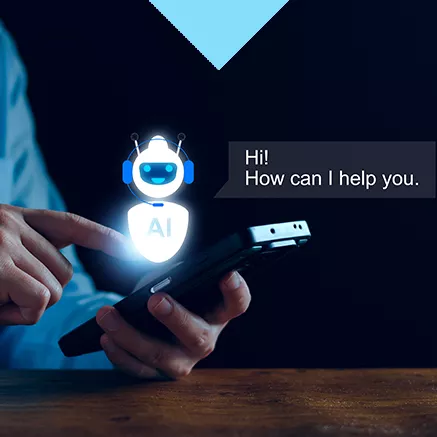The employee onboarding process has always been important – it’s how you bring someone new into the fold, after all.
With recent shifts in workplace engagement and expectations, ensuring employees are set up for success and aligned with company culture from Day One is mission-critical. Onboarding and engagement are incredibly intertwined.
For many organizations, onboarding new employees was approached as a formality – a checklist to be completed during the employee's first few days or weeks on the job. Even now, only 12 percent of employees strongly agree that their organization does a great job onboarding new staff. But it’s something employees are increasingly valuing. In fact, employees who had effective onboarding say they feel up to 18 times more committed to their workplace. In contrast, up to half of employees who experienced a poor onboarding experience say they plan to look for new opportunities elsewhere.
An effective, engaging employee onboarding program is so much more than just an orientation and paperwork to fill out.
It sets the tone for the entire employee experience, which has significant implications for productivity, job satisfaction and success down the line. It’s also the best time to introduce your company’s mission, values and culture.
While there is no one perfect employee onboarding template for every company, there are some best practices and approaches that are universally relevant. From cultivating company culture to leveraging technology, here’s how you can nail new hire onboarding from the very first day.
Best Practices To Structure the Onboarding Process
Before jumping into what a strong onboarding process involves, it’s worth revisiting the foundations. The right elements are essential for effectively setting someone up for success and keeping them invested in your company over the long term.
First, the basics. Yes, you need to make sure that the right documents are signed and submitted, the new employee has all the required access and has been introduced to the rest of the team. But you also want to affirm the employee’s decision to join the organization and nurture a sense of ownership off the bat. The onboarding phase is a golden opportunity to set the tone for the employee’s journey with the company.
Review your onboarding process for new employees from a holistic perspective. Ask yourself these questions to ensure the process includes the most important foundational onboarding elements.
- Strategic Integration: Does the onboarding process strategically integrate new hires into your overall mission, values and organizational culture?
- Technology: Are you leveraging tools and technologies that help streamline ongoing employee engagement, from the first day on the job and beyond?
- Clear communication: Is all communication throughout the onboarding journey clear and transparent, ensuring that expectations, roles and responsibilities are effectively conveyed?
- Employee-centric approach: Are you keeping the employee experience and journey at the center of the onboarding strategy, tailoring the process to individual needs and preferences?
- Peer-to-peer connection: What steps are you taking to build team connection, foster a collaborative environment and ensure a culture of employee appreciation?
- Feedback mechanisms: Have you integrated a feedback mechanism to continuously improve the onboarding process, making it a dynamic and evolving aspect of your company?
- Long-term support: Onboarding isn’t a one-time event. What elements of your onboarding program support employees over the long-term as they grow and evolve in their roles?
By viewing onboarding through a broader lens, it’s easier to see how it can be a transformative experience for employees that supports engagement at every touch point.
Onboarding Experience Optimization for Employee Engagement
A lot goes into fostering employee engagement, from celebrating milestone moments and accomplishments to fostering a company-wide sense of community and camaraderie. But it’s well worth the investment – engaged employees are happier, more productive and less likely to quit. And onboarding plays a huge role in employee engagement.
Done right, the benefits are wide-reaching and long-lasting. Onboarding that keeps engagement at the forefront:
Strengthens the Employee’s Understanding of and Commitment to the Company Mission
Increases Employee Motivation and Morale
Improves Retention and Long-Term Job Satisfaction
Fosters Teamwork and Collaboration
Boosts Productivity and Performance from the Start
Prioritizing employee engagement, from formal onboarding and beyond, contributes to long-term organizational success in countless ways. It’s an investment that yields dividends.
Methods To Enhance Engagement Through Employee Onboarding
One of the best ways to improve engagement during and after the onboarding process is to take a human-centered approach. This approach recognizes that employees are individuals with unique backgrounds, skills and aspirations – a one-size-fits-all approach doesn’t work for everyone.
By placing emphasis on the human aspect of onboarding, companies can forge a stronger connection with their employees – fostering a sense of belonging and dedication that goes beyond the standard orientation process.
So, what exactly does human-centered onboarding mean? In a nutshell, it means intentionally designing personalized experiences rooted in core values like empathy, respect and connection. It’s a recognition of the emotional journey a new employee undertakes during their integration into the company.
Here are some areas to focus on for a more human-focused onboarding experience:
A Personalized Onboarding Plan
Customized Learning Paths: Tailor the onboarding experience based on the individual employee's role, skills and learning preferences. Provide personalized training modules that address specific job requirements, in addition to longer-term career goals and interests.
Individualized Mentorship: Assign experienced mentors who can guide new hires based on their unique strengths and challenges. Foster one-on-one relationships to facilitate a smoother integration into the company culture and to encourage collegial relationships.
Focus on Emotional Wellbeing
Empathy Training: Train onboarding teams, including managers and mentors, to develop empathetic communication skills. Create an atmosphere that acknowledges the emotional aspects of starting a new job and provides support for addressing challenges and uncertainties.
Welcoming Environment: Design the physical and virtual workspace to be welcoming. Ensure that new employees feel included and valued from day one, fostering a positive emotional connection to the organization.
Interactive, Peer-to-Peer Collaboration
Team-Building Exercises: Incorporate interactive team-building activities to help new hires establish connections with their colleagues. This can include group projects, social events or collaborative problem-solving sessions.
Cross-Departmental Engagement: Encourage interactions with employees from different departments, promoting a sense of community and interconnectedness. This fosters a collaborative spirit and a broader understanding of the organization.
Continuous Feedback Loops
Feedback Surveys: Implement regular feedback sessions throughout the onboarding process with. Provide opportunities for new hires to share their experiences, ask questions and express concerns. Use this feedback to make real-time adjustments to improve the onboarding journey and create a culture of employee feedback from the very first day.
Performance Check-ins: Schedule periodic performance check-ins to discuss progress, set goals and address any challenges. This ongoing dialogue helps in understanding individual needs and adjusting support accordingly. It’s important to schedule check-ins beyond the typical 30-, 60- and 90-day reviews, instead making them a part of regular communication.
Onboarding experiences that are not only about efficiently transferring knowledge to the new hire, but also about being emotionally resonant and supportive in order to foster lasting engagement and a sense of commitment from new employees.
Benefits of Using Employee Onboarding Automation (AI)
As important as the human element to onboarding is, the role of technology can’t be overlooked.
For one, there are the tools that facilitate the process-parts of onboarding. That includes things like online portals, e-learning modules and digital documentation platforms that streamline administrative tasks, allowing new hires to complete essential paperwork efficiently. Video communication tools, as another example, facilitate virtual introductions and can help create a more personalized connection between team members, even in remote work settings.
Some organizations are also experimenting with artificial intelligence (AI), virtual reality (VR), and gamification tools to create a more engaging onboarding experience.
VR Simulations
VR simulations immerse employees in realistic scenarios, enabling them to familiarize themselves with tasks and environments without needing to be onsite in-person.
AI-Driven Chatbots
AI-driven chatbots can be used to provide instant support, answering queries and guiding new employees through various training processes.
Gamification
Gamification can inject an element of fun and competition into the onboarding process, making learning a more interactive experience that enhances engagement and knowledge retention.
Ensure a Balanced Onboarding Experience
Leveraging a tech stack that focuses on employee engagement specifically is a powerful way to bring together both technological advancements and the human-centered onboarding approach mentioned above.
On top of that, integrating an employee engagement platform like Inspirus leads to a much more effective, seamless onboarding experience. From fostering a culture of employee appreciation right from the start to encouraging feedback, each touchpoint enriches the overall employee experience and contributes to a collaborative, supportive work environment.
For instance, an employee engagement platform allows you to:
- Amplify recognition, especially peer-to-peer recognition, because the reach of your engagement efforts extend across departments and throughout the organization.
- Strengthen alignment with company values by using spot recognition and other programs to highlight and appreciate employees who exhibit desired behaviors.
- Foster opportunities for connection, both among employees and between employees and the company, boosting overall well-being and combating feelings of isolation.
- Cultivate a more inclusive culture by ensuring the platform's accessibility to all employees, contributing to a sense of belonging and shared participation.
Using the right tools not only makes onboarding easier, but they can be a strategic enabler – fostering engagement and a sense of wellbeing at every point of the employee’s journey.
Ongoing Engagement Post-Onboarding and Re-boarding
While a typical onboarding schedule might be anywhere from two weeks to a few months, cultivating a culture of engagement is an ongoing process that lasts the entirety of the employee’s tenure with an organization. The end of formal onboarding only marks the beginning of the employee’s journey.
A well-designed onboarding process lays the groundwork for long-term success and a sustained commitment but is something that can be revisited even once an employee is well situated in their role.
Many companies are starting to revisit this onboarding process even with established employees. The trend of “re-boarding” – revisiting the onboarding process at different points in time – is gaining momentum as a way to foster continuous, meaningful participation within the organizational culture. For remote or hybrid employees, this is particularly important.
According to research, remote employees are more likely than on-site workers to feel undertrained even after completing a traditional onboarding process. Among all employees, though, one-third find the onboarding experience confusing and say it leaves them feeling unprepared for their role.
Re-boarding is a way to re-engage with all employees and ensure that everyone feels supported in their roles, even if it’s been some time since they joined the organization. It also provides an opportunity to reestablish and reinforce the company culture, while energizing employees and improving workflows.
How do you meaningfully re-board employees? It takes all the same ingredients that make an initial onboarding process successful: invest in employee development, provide regular feedback opportunities, foster peer-to-peer connections, prioritize recognition and leverage employee engagement technology.
FAQ’s
What is the relationship between onboarding and employee engagement?
Onboarding is the foundation for a lifetime of employee engagement. A well-crafted onboarding process aligns new hires with the organization's culture, values and mission, fostering a sense of connection and commitment that extends far beyond the training period.
How can I design an onboarding process to improve employee engagement?
A lot goes into designing an effective onboarding program that fosters long-term engagement. Some of the most important elements include personalization, clear communication and interactive elements. Above all, onboarding should go beyond mere procedural tasks to ensure that new hires feel valued and integrated into the organizational fabric from Day One.
How do you keep employees engaged during onboarding?
Incorporate interactive elements, mentorship programs and opportunities for social connections to create a positive and dynamic experience.
What is recruitment onboarding for employee engagement?
Recruitment onboarding is a strategic, intentional approach to bringing new employees into the organization. It involves thoughtfully aligning new employees with the company culture while providing the necessary tools and support for a smooth transition to ongoing engagement.
Other Valuable Resources on Employee Onboarding
Guide to New Hire Onboarding














